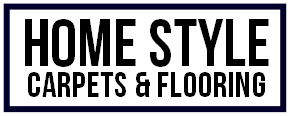The Pros and Cons of Laminate Flooring
/Are you considering a new flooring option for your home? You might be in the process of designing and building your home or considering a refresh for tired flooring. Either way, laminate flooring is one of the most popular options on the market and is worth looking at closely.
Laminate flooring is multi-layered and made from synthetic materials. A thin protective scratch layer covers the decorative layer (which usually mimics wood grain or stone), beneath which there are core and backing layers.
This is a type of flooring which is favoured for its versatility, cost-effectiveness and ease of installation - but there are also potential downsides you should consider. In this article, we’ll weigh up the pros and cons of laminate flooring, to help inform your investment in new flooring.
Pros of laminate flooring
Durability
Durability is undoubtedly one of the biggest selling points of laminate flooring. While softwood can scratch easily and carpet attracts stains, laminate flooring is made of tough stuff. Its top layer is manufactured from melamine resin that protects it from scratches, as well as scuffs and wear and tear. If you have a high traffic household, with kids or pets constantly moving around, hard-wearing laminate can be a sensible option.
The core layer of laminate flooring is one of the key facets when it comes to durability. It is made of high-density fibreboard that offers significant stability and prevents planks from buckling or warping. This layer also helps to combat the separation of the planks over time, which can happen due to temperature or humidity fluctuations.
Easy to maintain
With a non-porous surface that doesn’t harbour dust and dirt, many people find that laminate flooring is a dream to maintain. Just a sweep every few days can easily take care of the surface debris, and when a deeper clean is required, a mop with hot water and floor cleaner can leave your floor looking sparkling.
The stain resistance offered by laminate flooring is a potential cost-saver in the long run, and can certainly save a fair amount of elbow grease! Unlike surfaces such as hardwood or stone, a laminate surface does not absorb any spills, making it easy to simply wipe them away with no discolouration. With no worries about stains, you can rely on laminate to retain its ‘like new’ appearance with a little regular cleaning.
Cheaper than wood
Initial laminate flooring cost varies according to the quality of the materials, and other factors such as the brand and location. In general, laminate is at the lower end of the price scale compared to engineered wood or solid hardwood. It is a cost-effective option when you consider its durability and the fact it is easy to maintain. Laminate is s good option for homeowners who want a budget-friendly flooring option.
Easy installation
With a click lock or tongue and groove design, laminate flooring systems are relatively easy to install. Professionals and experienced DIYers will be able to master this straightforward process. Many laminate flooring planks can be installed over the top of existing flooring. When this is a viable option, it can reduce costs by negating the need for the existing flooring to be removed.
Flexible design
Laminate flooring often gets thumbs up for its appearance, and that’s in no small part due to the broad variety of styles and finishes it is available in. Whether you want to mimic the look of wood, stone or tile, laminate can give an approximation of the same aesthetic. How detailed and life-like the design is will vary, but in many cases, even obvious laminate can offer a pleasing look.
Good choice for underfloor heating systems
Underfloor heating offers benefits such as added comfort and greater efficiency, but it works better with certain types of flooring. Laminate flooring is a good option for covering an underfloor heating system, as it isn’t too thick and provides decent thermal conductivity. Thanks to the high-density core layer, there is also minimal expansion and contraction of planks as temperatures rise and fall.
The ease of installation we mentioned previously is also an important consideration when it comes to removing and replacing flooring to lay an underfloor heating system. Electric or hydronic underfloor heating combined with laminate flooring may be one of the best cost-effective options on the market.
We’ll now move on to the potential downside you should consider when looking at laminate flooring.
Cons of laminate flooring
Cannot be refinished
While hardwood floors can be sanded and refinished several times to restore their appearance, laminate floors are different. Due to the composition of laminate flooring, it cannot be refinished - after the wear layer has been damaged or worn over time, it must be replaced rather than restored. You can replace the specific planks which are damaged, or opt for an entirely new floor.
It should be noted that while the melamine layer is highly durable, it does have a working life. After years of heavy use, you can expect to see signs of wear and tear, or an overall dullness. If you do choose to replace the affected plank rather than the whole floor, you should note that it can be tricky to achieve a seamless blend between the new plank and the rest of the older floor.
Susceptible to water damage
Laminate flooring is not completely waterproof, although it is water resistant. Despite this water resistance, it must be said that laminate flooring can be more vulnerable than some other flooring types of water damage.
Laminate flooring has a core layer of high-density fibreboard. This is a material that has been designed to resist moisture to some extent. However, it should be recognised that when laminate flooring is exposed to water or high humidity for a long period of time, the core may warp or swell, leading to deterioration over time. Ultimately, if it’s a dry living area of your house, the water resistance offered by laminate flooring might be an entirely feasible option. However, for wetter rooms such as bathrooms or kitchens, a waterproof surface type may be better.
Noise
In contrast to some other flooring types, laminate provides less sound insulation. Due to the rigid laminate planks, laminate flooring can amplify noise through a house and to the property below (in the case of apartments). While carpet can help to reduce impact noise from footsteps, stepping on laminate tends to produce a hollow knock which can be heard as a thud from the room below. Dropping objects or moving furniture can also be a loud exercise.
For those with multi-storey properties, or for rooms which are above a living area, laminate flooring may not be the best choice to keep the noise down. The insulation offered by a carpet can offer dual benefits in rooms such as kids’ play areas - it also provides cushioning and makes the room safer for youngsters.
Can’t fully replicate natural look
How well laminate flooring mimics the natural look of wood or stone will vary according to each product. Some of the modern laminate flooring options at the higher end of today’s market are exceptionally realistic. To the trained eye, however, there may be some subtle characteristics of wood or stone that laminate cannot quite replicate.
Also, there is no denying that some of the cheaper options you might find are quite clearly not ‘the real thing’, especially when it comes to a wood appearance. This is despite including natural wood details such as knots and graining. Experts indicate that it is the repetitive nature of the artificial patterns found on some of the cheaper laminates that can lack the warmth of real wood.
Fading and discolouration
Despite its many advantages, such as resistance to stains and durability, in the long term laminate flooring can discolour. Laminate flooring is a manufactured product that is vulnerable to prolonged UV light exposure. Just like old photographs fade, laminate flooring can also develop a dullness as years pass. This means you may lose the wood tones or distinctive patterning that lend a vibrancy to the laminate.
Another consideration is that laminate flooring may fade inconsistently, potentially due to varying levels of light exposure. This can leave flooring with an uneven look that results in an ungainly patchwork appearance across the flooring. Some types of laminate flooring hold up better than others to UV light. Indeed, there are now laminate flooring products with properties that inhibit UV light over time. However, there is no manufactured laminate flooring which can completely negate the effects of sun exposure over the years.
Considering the suitability of laminate flooring
After weighing up laminate flooring’s pros and cons, have a think about your specific needs. What do you want to achieve from your flooring? Which room are you buying for? What’s your budget? And what is your household like?
If one or more of your priorities are; durability, easy maintenance, cost-effectiveness and suitability for underfloor heating - you might have an excellent match in laminate flooring. This is especially true if you are purchasing laminate flooring for a living room, bedroom or hallway.
On the flip side, if you are considering flooring for a room that is often wet, are looking for a completely natural material, or are concerned about noise travelling through to the room below, you should certainly think twice before opting for laminate flooring.
Deciding whether to install laminate flooring should be dictated by your use of a space, your priorities in terms of durability and maintenance, and of course, your personal preferences. Ensure that you make a balanced choice that will give you appealing flooring while also offering practicality and value.

